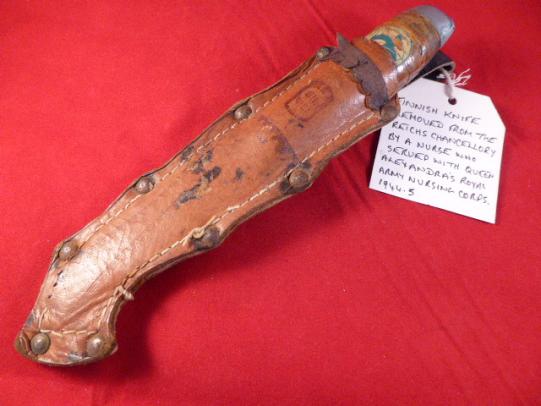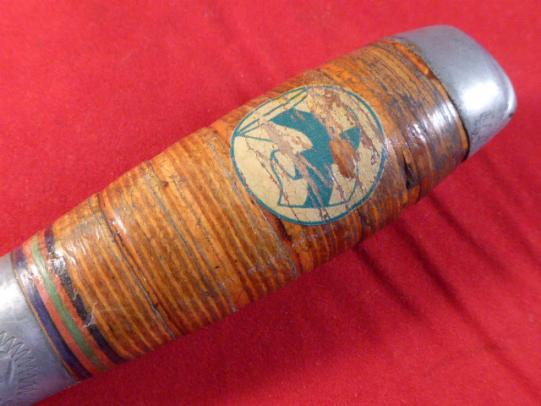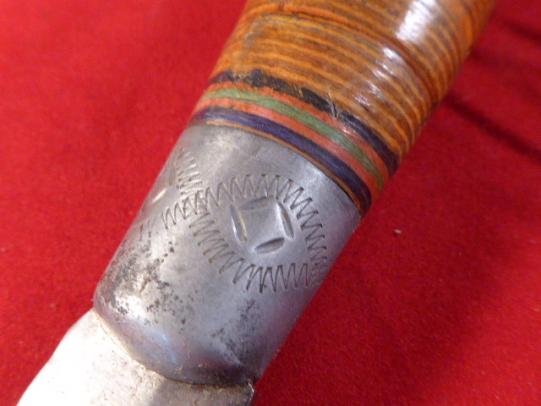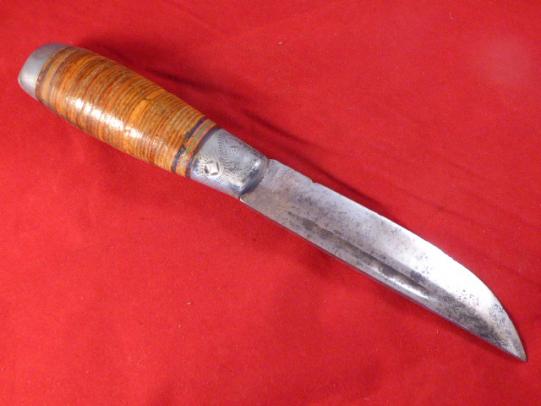Rare Finnish Puukko Knife removed from the Reichs Chancellery by an English Nurse in 1945
Here on offer is one of two Finnish Puukko knives I acquired years ago from an old gentleman in Aldershot, England.
The story the man told me was he was gifted them by a woman who was a nurse serving with the Queen Alexandra’s Royal Army Nursing Corps who acquired them from the Reichs Chancellery in Berlin after it was destroyed in 1945.
Sadly he didn’t remember her name, but he did right out some labels (still attached) to remind him of where they came from.
The Puukko is a Finnish knife, and the name lends itself to the Finnish word “puukotta,” which means “to stab/knife.” The prefix, “puu” means “wood” in Finnish. The design of the puukko is attributed to the indigenous Sami people, who created several knives to use for day to day tasks; the puukko was the smaller option, used to skin fish or animals. Although historical records vary, the puukko dates back about 1000 years. Both men and women carried (and carry) puukkos, although the sizes change depending on the person, as the puukko handle is meant to fit the hand size of the user.
By World War 2 large number of puukko-knife designs individual to certain manufacturer or manufacturers of certain geographical area had become available from multitude of factories and smaller scale manufacturers spread all over Finland. Hence when each Finnish soldier brought his own puukko-knife with him, they brought extremely wide variety of puukko-knives with them, which would make making any effort of trying to determine standard puukko-knife for Finnish soldiers of World War 2 completely impossible. What can be notes is, that during the war soldiers apparently had certain tendency of favoring puukko-knives with longer blade than typical – presumably because longer blade made knife better suited to be used as a weapon in hand-to-hand combat. Especially during long trench war period of Continuation War making trench-art items developed into such a wide-spread hobby among Finnish Army, that it reached almost industrial scale. Besides puukko-knife being the most common tool for trench-art it also become with one of the most common trench-war items to be made by soldiers. These trench-art puukko-knives and their sheaths tended to be more lavish and decorative than the everyday puukko-knives that most of soldiers otherwise carried with them.
Finland was actually an ally of Germany, but never controlled or occupied by Germany as such and they mainly fought the Russians during WW2. So it is more than possible that Finnish military hardware could end up in Berlin during WW2.
This fine example of a Puukko has a Birch bark handle with aluminium bolsters and the remains of a Finnish Flag decal on the front of the grip.
The blade is a single edged steel blade that has been sharpened over the years and this has sadly removed the makers name, only the traces of a few letters remain. The cutting edge is sharp but does have a couple of nicks in the blade edge.
The sheath has been tooled from brown leather, which I believe is reindeer leather with a belt loop on the back. The edges have been stitched and riveted together, although the rivets show signs of rust, but they could be cleaned. There is also an “S” marked on the front and some usage scuffs and black marks on the sheath.
The blade measures 4.2” (10.6cm) and the knife itself 8.25” (21cm) long.
Inserted in the scabbard it measures 8.7” (22cm) long.
It weighs 125g.
Please see my pictures for the details of the condition, which complement this description.
Please see my TERMS OF BUSINESS regarding Deliver Charges and Insurance regarding additional insurance cover, should you require it, BEFORE the item is dispatched.
Code: 50034









